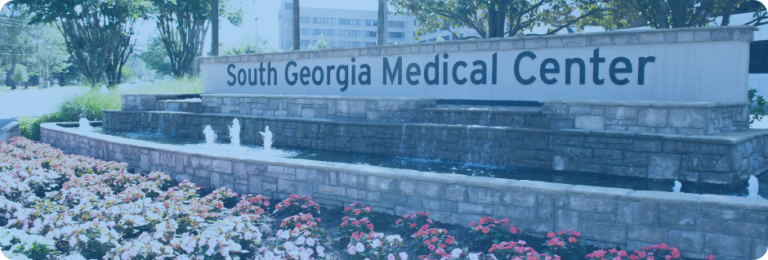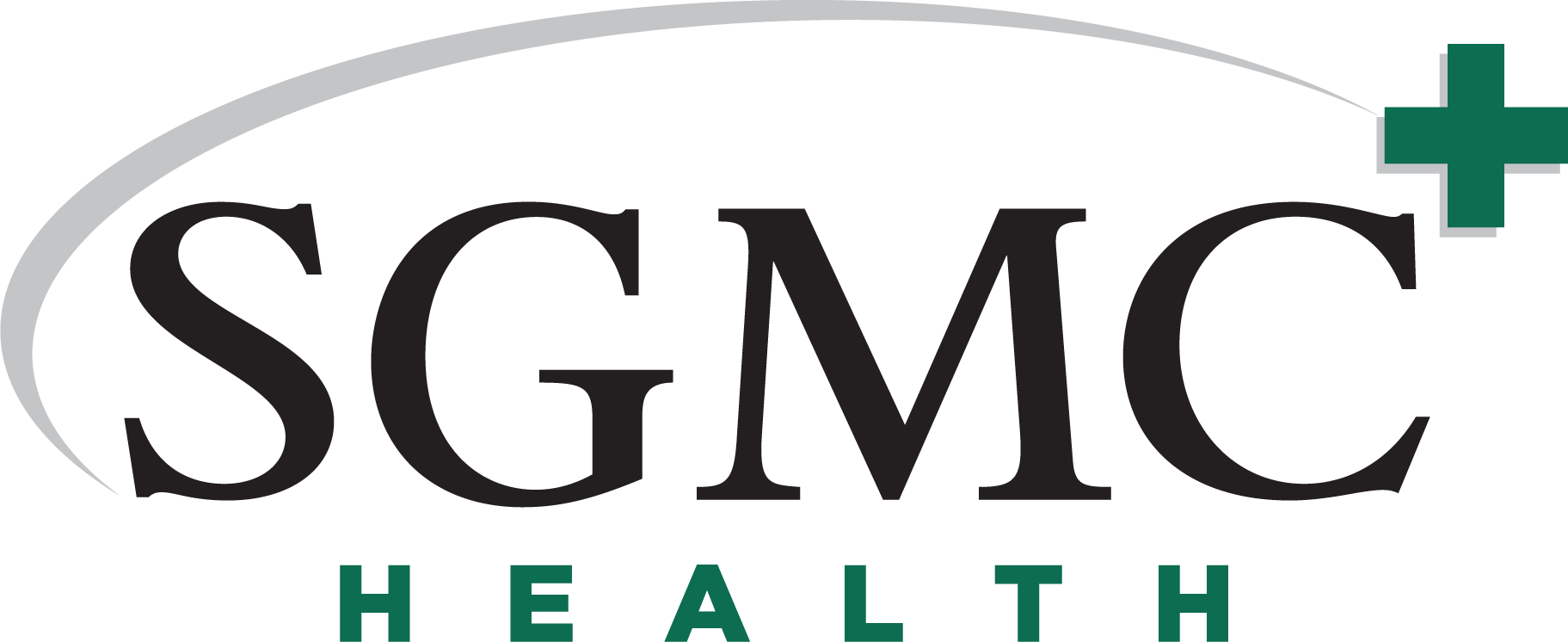
SGMC Health Celebrates 68 Years Serving YOU!
Pineview General Hospital opened as Valdosta’s first not-for-profit community hospital on July 1, 1955. The 100-bed healthcare facility served Valdosta and surrounding counties. The Hill-Burton Act, a Federal grant program, provided the majority of the hospital’s construction funding. Two local bond referendums provided the remainder of the funds
On opening day, 32 affiliated physicians including general practitioners, surgeons, radiologists, and dentists had affiliated with the Medical Staff of Pineview General Hospital. Thirty-five patients from Little-Griffin-Owens-Saunders Hospital (Pineview’s privately-owned predecessor) transferred to the new hospital. Nine patients were directly admitted on opening day. From then on, the hospital was busy.
Within five short years, the governing board of the hospital, the Hospital Authority of Valdosta & Lowndes County, GA, saw the need for more inpatient beds. Construction began and the first addition to Pineview General was completed in 1964. This construction added 90 patient beds and new emergency, X-ray, and operating rooms. A new chapel and classrooms were added. A new pediatric wing was built on the fifth floor. A 26-bed Comprehensive Community Mental Health Center was constructed to address the need for regional behavioral health services.
By 1971, the hospital had grown considerably. Because Pineview was serving the healthcare needs of more than 200,000 persons from South Central Georgia and North Florida, the hospital’s name was changed to South Georgia Medical Center on October 20, 1971.
In 1972, Lowndes County was among the first Emergency Medical Services in the nation to have trained medics and ambulances with advanced life-support equipment and radio telemetry units. A $2.3 million construction program was completed in 1975 which added an 8-bed medical intensive care unit, an 8-bed surgical intensive care unit, neonatal intensive care unit, 49-bed orthopedic-neurosurgical unit, and a laboratory. The expansion also included enlarging the Emergency Room and X-ray department, as well as modernizing other areas. When this expansion was completed, the number of licensed beds increased to 288.
In 1982, another two-year, $26 million expansion began. In 1984, the North Tower expansion and first floor renovation was completed. The community welcomed the new facilities which added operating suites, new labor, delivery, and nursery facilities, patient floors, central supply and pharmacy, a business office, a cafeteria, and a new lobby. In early 1986, a Cancer Treatment Center was opened which included our first linear accelerator and other cancer treatment equipment. Today, the Pearlman Comprehensive Cancer Center is a regional center of excellence having received state and national awards for quality patient care.
Hospice of South Georgia started in 1987 as a supportive care system for persons with limited life expectancy. Today, Hospice serves eight counties and operates the only inpatient hospice facility in the region. The hospice house was named after its benefactors, the Langdale Hospice House.
In the mid-80s, the maternal-child unit was modernized and renamed the Birthplace. It incorporated four birthing rooms for all phases of childbirth, along with traditional separate rooms for labor, delivery and recovery. In the late 1980s, SGMC completed a $1.3 million expansion and renovation of the SGMC laboratory.
The 1990s brought significant service line growth to SGMC. A $6 million senior living facility, Langdale Place, opened in 1991, the Outpatient Center opened in 1994, and the Pearlman Comprehensive Cancer Center opened in 1995. SGMC added a new Cardiology Center in 1996 with diagnostic testing, a state-of-the-art heart catheterization laboratory, a monitor bank, a 19-bed Cardiac Progressive Unit and an eight-bed Cardiac Intensive Care Unit. The floor was named the Dasher Memorial Heart Center in honor of the Dasher family who began a long history of personal giving with this first contribution.
A 1996 renovation of the Pulmonology/Neurology Wing added space for SGMC’s Sleep Disorders Center, a 2-bed sleep lab for in-hospital studies and in-home testing. Cardiology services were consolidated onto 3-SoutIn 2002, the Birthplace was renovated adding 8 labor-delivery-recovery rooms and two C-section suites. Pediatrics moved to 2-West. In 2004, two, all-digital cath labs were added on 3-South to better manage the numbers of cardiac patients being treated at SGMC.
In 2006, SGMC opened a new Information Technology building and expanded Materials Management. We broke ground on the new Surgery Center and Professional Building in 2007. Also that same year, Emergency Services moved into a new 40-bed ER. The ER is a vital part of SGMC’s designation as a Joint Commission Certified Primary Stroke Center. SGMC’s Code STEMI program for heart attack patients is a model for emergency medical training. SGMC is also recognized for rapid cardiac catheterizations and a high-quality open heart surgery program. A dual helipad, which is located adjacent to the ER, allows the air transport of critical patients to and from SGMC.
The Imaging Center opened on the ground floor of the Professional Building in August, 2011. As the only stand-alone, full-service diagnostic imaging center below Macon, the SGMC Imaging Center consolidates X-ray, PET CT, CT, mammogram, ultrasound and nuclear imaging into one convenient location.
The new Dasher Memorial Heart Center and Patient Tower opened in September 2013. The $65 million, 130,000 square foot facility consolidated cardiology services and new, specialty-care nursing units into one easily-accessible location. The tower construction is the largest building program in the hospital’s history. The facility brought registration, cardiac diagnostics such as echocardiography and stress testing, nuclear medicine, invasive procedures such as angioplasty and stents, and specialty nursing for cardiac progressive care and cardiac intensive care together. The upper three floors of the tower also houses 96 private hospital rooms with state-of-the-art digital technology. Large rooms with private baths and ample seating offer a family-focused environment.
Since the size of the SGMC campus doubled with the addition of the new tower, the need for emergency power also increased. SGMC invested approximately $10 million to construct a generator plant of a size and scale unmatched in the region. When the primary source of electricity is interrupted, the diesel generators maintain critical equipment and services for the entire campus. For the design, SGMC received an award of excellence from the American Society of Healthcare Engineers.
SGMC began its open heart surgery program in 2001. Over the years, cardiology services has developed into a program of statewide distinction with patients coming here from across the state. In July, 2014, SGMC opened the SGMC Cardiovascular Institute (CVI) to integrate a full-time clinical practice with cardiothoracic and vascular/endovascular surgeries. This comprehensive program offers specialized procedures such as CABG, heart valve replacements and carotid stents so patients don’t have to travel away from Valdosta for care. Plans recently culminated to open a hybrid operating room with advanced imaging to further enhance cardiac and vascular procedures at SGMC.
In addition to its 285-bed main campus in Valdosta, SGMC Health operates four off-site campuses— SGMC Health Outpatient Plaza/Smith Northview in North Valdosta, the 63-bed SGMC Health Berrien in Nashville, and the 25-bed SGMC Health Lanier and 62-bed SGMC Lakeland Villa in Lakeland.
With over 2,500 employees and 300 affiliated members of the Medical Staff, SGMC Health, its campuses and affiliates are privileged to serve this region. SGMC Health’s reputation for providing quality medical care and advanced medical technologies has been proven over time. We are proud of our service values and look forward to serving you and your family.
